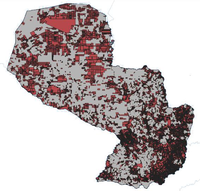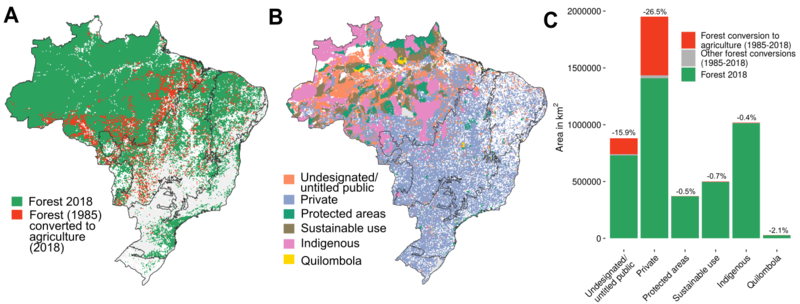
Causes of Land-Use and Biodiversity Change
Human land-use drives changes in species habitats and populations, and in turn responds to changes in economic activity, governance systems, climate change, and other drivers. We study these causal relationships at multiple spatial and temporal scales.
For example, to analyze causal effects of land-governance regimes on the environment, we continuously mobilize extensive databases of land parcels and associated ownership types (e.g. see land Parcels of Paraguai on the right), comprising hundreds of millions of records. Our growing data pool already covers many countries in North America, South America, Oceania, Europe, and parts of Asia and Africa. Most recently, we analysed the influence of land ownership types, from private farms to indigineous territories, on agricultural expansion in forestlands.
Below, we see an example output of our research in this field.The example figure shows gorest conversions to agriculture (1985-2018) and the spatial distribution of different land-tenure regimes in Brazil. A) shows all forest cover converted to agriculture. B) shows the spatial distribution of six different land-tenure regimes, collated from Imaflora’s Atlas of Brazilian Agriculture. C) shows total areas of forest that were converted to agriculture (red) or other land uses (grey) between 1985 and 2018, and remaining forest cover in 2018 (green), across Brazil-wide parcels under each tenure regime. Percentages of total original (1985) forest-cover per tenure regime that were converted to agriculture by 2018 are indicated above each bar (Pacheco and Meyer, preprint).

